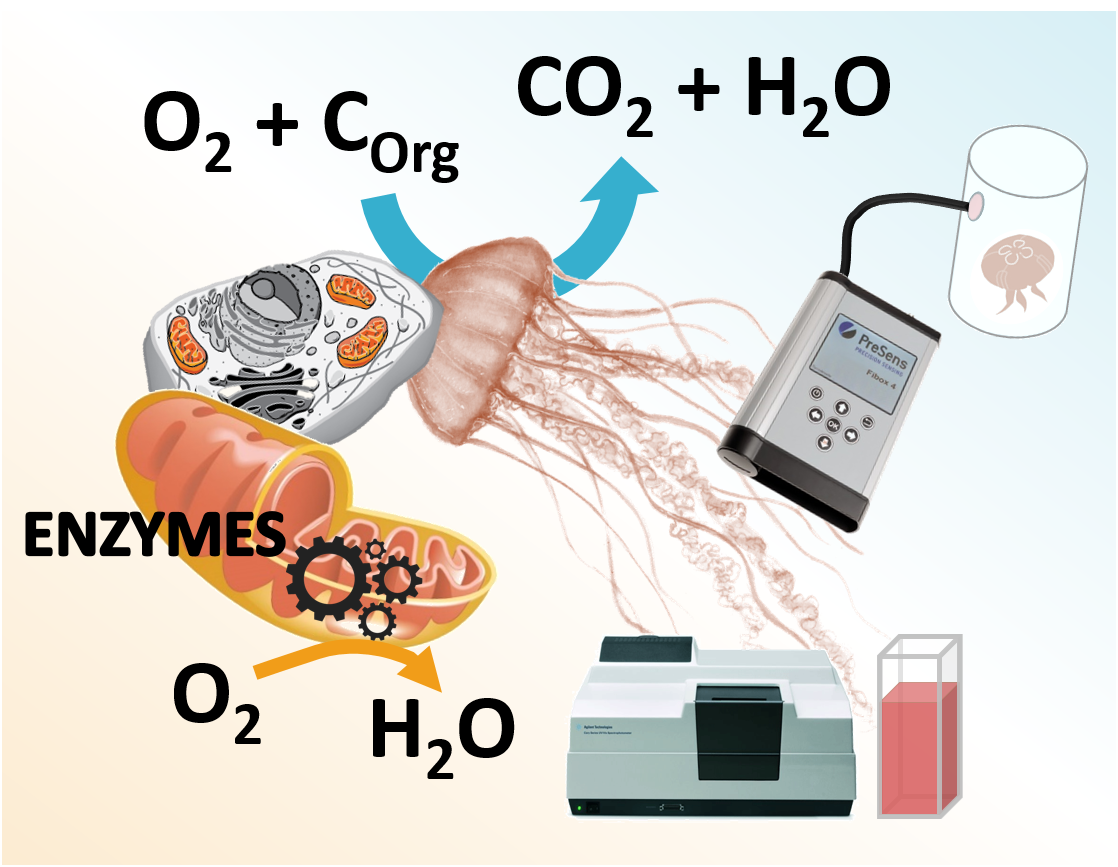Ph.D. Program in Oceanography and Global Change at the Canary Islands, Spain
The determination of respiratory metabolism rates in scyphozoans is encountering problems associated with incubation logistics and undamaged preservation of these fragile samples. Here the optimum conditions to develop a kinetic electron transport system (ETS) activity assay for the scyphozoan Aurelia aurita have been tested. In this study we described the enzymatic tests performed to develop said assay. This technique was applied in several life stages of A. aurita including; polyp, ephyra and medusa; and on the scyphozoan Pelagia noctiluca. Optodes were also used to determine physiological respiration (R) and compared with the results of potential respiration (Ф) from the enzymatic assays in the same organisms. The biomass of the organisms were obtained through wet mass and also measuring protein content. Potential regression equations between the biomass and the respiratory metabolism were calculated. Additionally, the results were compared with some present in the literature regarding the respiration and the protein composition of the specimens. We found evidence of differences between the sessile and planktonic life stages of Aurelia aurita and differences between both species. The respiratory results were used to determine the carbon demand of said organisms showing the possibility of a better integration in ecosystem models and it opens the door for its application for many other fragile and large gelatinous creatures.




